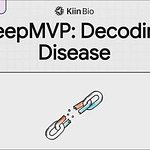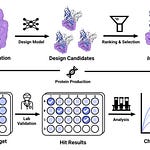The Chan Zuckerberg Initiative (CZI) has introduced TranscriptFormer, a groundbreaking generative foundation model designed to map and interrogate cellular diversity across 1.5 billion years of evolutionary history. Trained on 112 million single-cell transcriptomes from 12 species—including humans, mice, zebrafish, and even fungi—this model establishes a unified framework for understanding cellular biology and accelerating drug discovery.
Key Innovations of TranscriptFormer
1. Cross-Species Integration
Evolutionary-spanning insights: Integrates data from species separated by up to 685 million years, leveraging ESM-2 protein embeddings to align orthologous genes across evolutionary distances.
Zero-shot generalization: Achieves robust cell type classification (F1 >0.65) even for distant species like stony coral, outperforming benchmarks like UCE by 15% in accuracy.
2. Generative Capabilities
Virtual experimentation: Predicts cell type-specific transcription factors and gene-gene interactions via prompting, recovering 70–87% of known regulatory relationships (validated against STRING v12.0).
Disease state identification: Accurately distinguishes SARS-CoV-2-infected lung cells (F1 = 0.859) by capturing infection-induced transcriptional shifts, surpassing models like scGPT and Geneformer.
3. Scalability and Performance
Three model variants (368M to 542M parameters) trained on species-specific to phylogenetically diverse datasets.
Outperforms human-only models in cross-species tasks, demonstrating that evolutionary diversity enhances human cell type classification (F1 = 0.910 on Tabula Sapiens 2.0).
4. Context-Aware Biological Insights
Gene embeddings: Contextualized gene representations (CGEs) encode cell type, tissue, and donor-specific variations without supervised labels, enabling nuanced analysis of transcriptional regulation.
Applications in Drug Discovery
Disease mechanism mapping: Identifies host-pathogen interactions and cell-specific responses (e.g., COVID-19 lung infection).
Target discovery: Predicts transcription factor networks (e.g., E2F8, FOXM1) linked to cell cycle regulation and immune responses.
Cross-species translation: Transfers annotations between species (e.g., spermatogenesis cell types in primates to chicken), aiding preclinical model validation.
Data and Accessibility
Open datasets: Pretraining data available via CZ CELLxGENE and GEO; evaluation datasets include coral, zebrafish, and COVID-19 lung atlases.
Code and models: Publicly accessible on GitHub and CZI’s Virtual Cells Platform.
Future Directions
Multimodal expansion: Incorporating spatial and proteomic data.
Enhanced generalizability: Addressing batch effects and extending to perturbation prediction.
Limitations
Focused on transcriptomics; future iterations aim to integrate 3D structural and epigenetic data.
TranscriptFormer pioneers a new paradigm for computational biology, transforming single-cell data into a dynamic, cross-species atlas for hypothesis generation and therapeutic discovery. By bridging evolutionary biology and machine learning, it empowers scientists to explore cellular mechanisms at unprecedented scale—ushering in a new era of in silico drug development.









